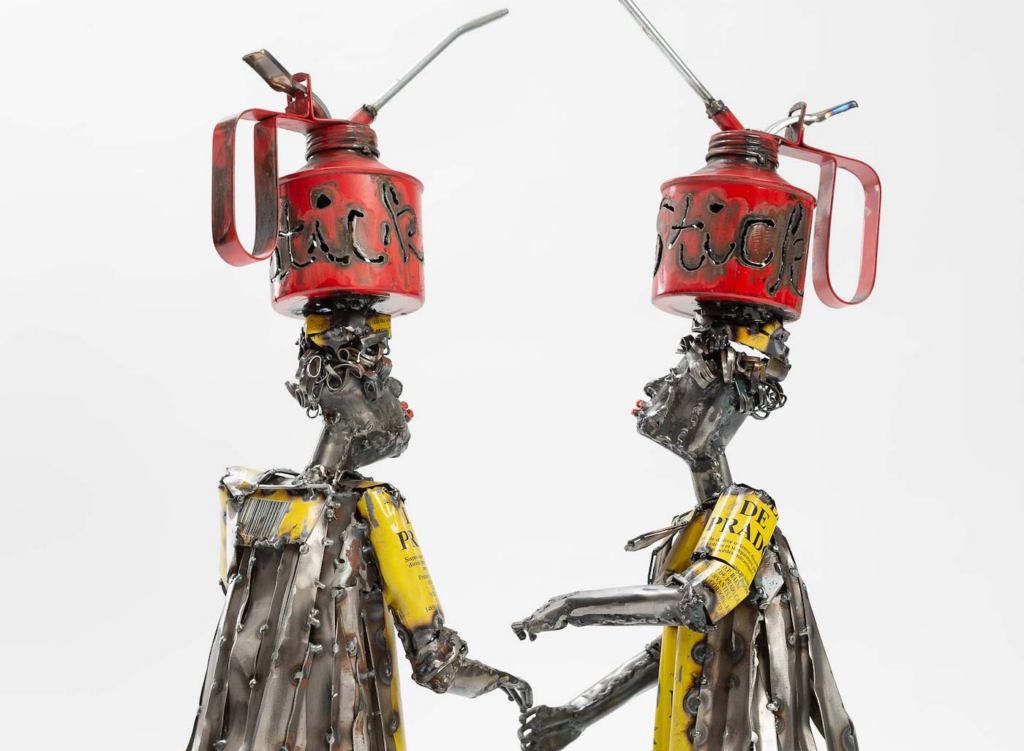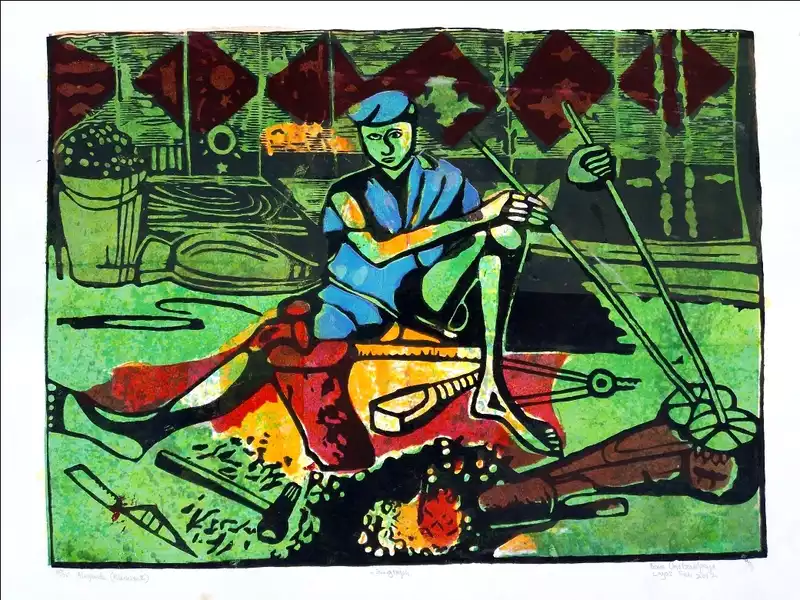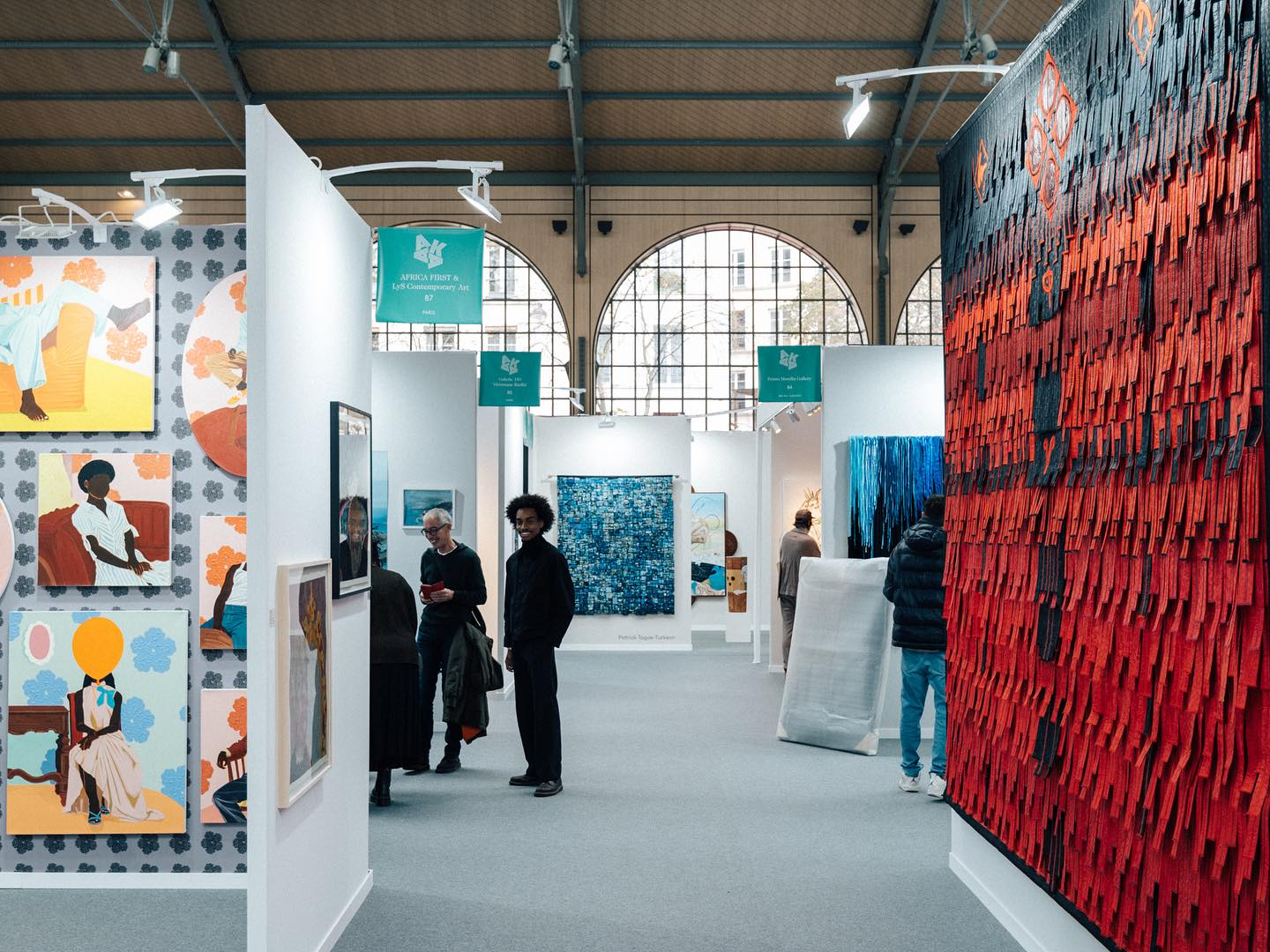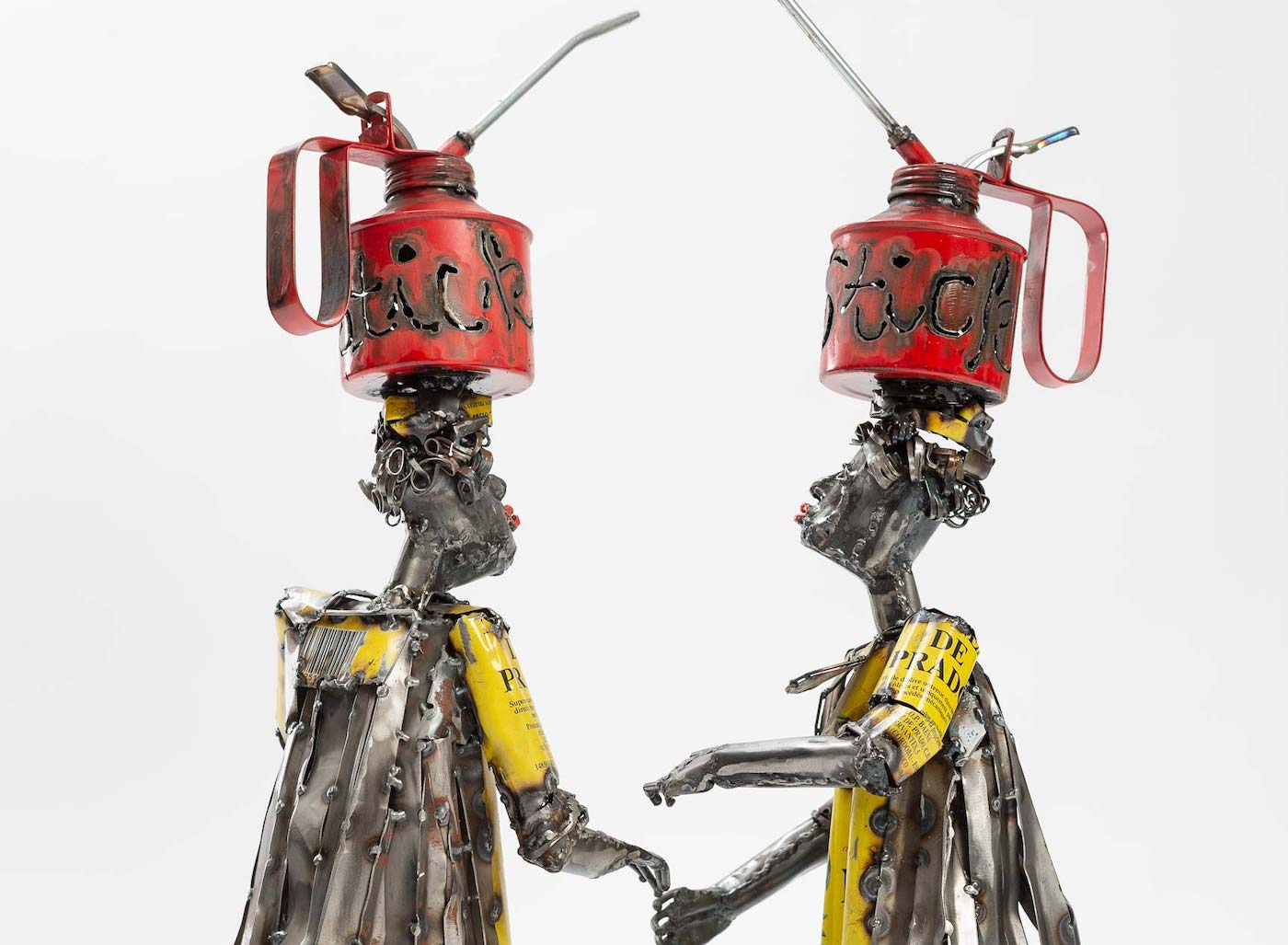With global environmental effects, climate change remains one of the most pressing issues we face today. Art has played a resourceful role in raising awareness and inspiring collective action for a more sustainable future, as these environmental-related issues are at the forefront of contemporary art discourse. Like other artists across the world, African artists such as El Anatsui, Wangechi Mutu, Gonçalo Mabunda, Peju Alatise, Rashid Diab, and Porky Hefer, among others, have used their innovative works to highlight how climate change affects Africa, emphasizing the urgency of the crisis while demonstrating the power of art as a tool for social transformation for a more sustainable future.
As more artists explore climate change in their work, here are three African artists responding to the ecological challenges affecting their home countries through their use of materials and methods that promote environmental sustainability in their practice.
Sokari Douglas Camp’s practice illustrates the unimaginable effects of the Niger Delta oil spill
Born in Buguma, a large town in Rivers State, Nigeria, Sokari Douglas Camp is an acclaimed sculptor known for her public installations exploring movement, clothing, Kalabari culture, theatre, and the environment. Inspired by her Kalabari heritage and broader aspects of African culture, the Nigerian-British artist creates steel sculptures from scraps of discarded metals and recycled oil barrels to highlight the wide-ranging issues facing Nigeria, from its colonial past to environmental concerns. In her work, she references the devastating effect of fossil fuel extraction on her community as she highlights economic colonialism perpetuated by multinational oil companies and exacerbated by bad governance from the Nigerian government.
Sokari Douglas Camp’s work can be found in permanent collections at The Smithsonian Museum, Washington, D.C., Setagaya Museum, Tokyo, and the British Museum, London. Her public artworks on the Niger Delta oil spill include Battle Bus: Living Memorial for Ken Saro-Wiwa (2006), a full-scale replica of a Nigerian steel bus that stands as a memorial to the late Niger Delta activist and writer; and recently featured in Narrative Wisdom and African Arts is Relative (2010), a sculpture referencing the memorial traditions of the Kalabari people.
Ozhopé Collective inspires critical thinking and collective change in Malawi
Founded in 2017, Ozhopé Collective is a group of two artists Ella Banda and Massa Lemu, a photo/videographer Tavwana Chirwa, and a writer Emmanuel Ngwira. Their mission is to collaboratively produce art that inspires conversations and critical thinking around everyday life.
Some of their notable projects include: Row 1, Row 2, and Row 3, installations showing the explorations of conversations around Lake Malawi and the Malawi government’s intention to drill for oil in the lake. Zomba Market Conversations focuses on the conversations among fish vendors regarding the oil project and its implications on the fish trade. Featuring a gule wamkulu mask almost submerged in water, Submergent Poetry is a series of nine photographs of performance and rhyming text taken in Lake Malawi to address the urgency of expression of those whose land, water, and air are destroyed by extractivist racial capitalism. #Breathe focuses on issues related to the (mis)information and the Malawian’s government’s response to the COVID-19 pandemic in Malawi.
Otobong Nkanga explores the connection between humans, land, and materials
Working across performance, sculpture, drawing, painting, textiles, photography, and installation, Otobong Nkanga’s practice focuses on the memory, the environment, and the histories of Africa and the Western world. Through her practice, Nkanga creates pathways translating the natural world – its plants, herbs, minerals, and living organisms – into networked, aggregated situations evoking memory, labor, home, care, ownership, emotion, touch, and smell. In her own way, Nkanga acts as a cultural anthropologist, reflecting on post-colonialism and global capitalism by tracing the violent way precious minerals are taken from their natural environment in Africa and transformed into objects ranging from precious jewelry to everyday objects.
Some of her long-term projects include: Landversation (2014 – 2020), a dialogue between Nkanga and four cities; The Carved to Flow Foundation, established in Akwa Ibom, Nigeria, dedicated to researching material cultures and fostering shared experimentation and exchange locally; and Cadence, an all-encompassing environment of tapestry, sculpture, sound, and text exploring the turbulent rhythms of nature and society.
Iyanuoluwa Adenle is a Nigerian art writer, essayist, and poet based in Lagos. She is currently the head writer at Omenai. Adenle has contributed to a number of art publications, including Tender Photo, Art News Africa, Pavillon 54, and Omenai.






